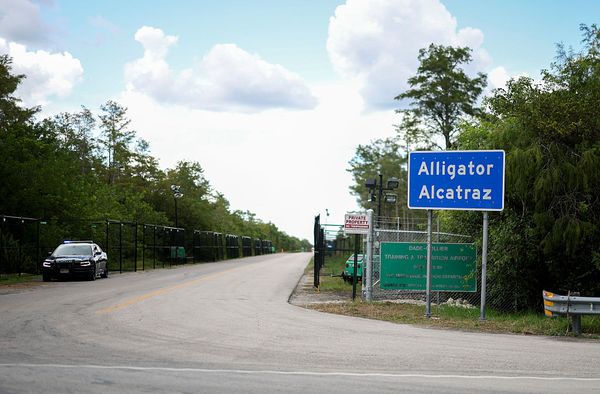
You pick fresh produce thinking it’s healthy—but what if the section you trust most is actually risking your safety? Bacterial contamination on fruits and vegetables is a real concern, and not all produce sections are created equal. Knowing which supermarket chains tend to have clean handling practices—and which ones show more red flags—can help you shop smarter. Even without a perfect chain rank, there are clear patterns that set good from bad. Below, we explore three types of produce sections that are likely among the cleanest and three that are more likely to harbor bacteria, plus tips on what to watch for so you avoid the worst.
1. Cleanest: Chains with Transparent Supply Chains and Local Sourcing
Produce sections in chains that disclose where their produce comes from and emphasize local sourcing often have better hygiene. When produce travels less, there’s reduced handling and refrigeration stress, both of which minimize bacterial growth. These stores are more likely to use shorter supply chains (fewer transport and storage steps), so less chance for contamination. Local sourcing often means better oversight of the farm, closer inspections, and more accountability. Such chains usually invest in visible cleanliness: clean bins, well-lit displays, and frequent staff handling.
2. Cleanest: Chains With Strict Fresh-Cut Produce Protocols
Ready-to-eat, fresh-cut produce is especially vulnerable to contamination because cutting breaks the natural barriers of fruits and veggies. Chains that follow strict guidelines (how often workers rinse, sanitize surfaces, and maintain cold temperatures) tend to have cleaner, fresh-cut produce sections. According to studies, fresh-cut produce has a significantly higher risk for bacterial growth compared to whole produce. ScienceDirect+1 Chains that treat fresh-cut produce more like a food processing facility—with hygiene checks, temperature control, clean equipment—do far better. When you see fresh-cut packages that are “made in store,” ask whether the chain posts or publishes its hygiene procedures or safety checks.
3. Cleanest: Stores That Regularly Pass Health & Food Safety Audits
Stores that allow third-party audits or regularly score high in local health department inspections often maintain cleaner produce sections. Audits cover working surfaces, staff hygiene, pest control, water quality, refrigeration, and packaging, all of which affect bacteria levels. Chains known for high compliance tend to show fewer incidents of recalled produce or foodborne illness outbreaks. Transparent audit results, posted online or in store, are a good sign. Cleanliness tends to be consistently high in such stores, even in high-traffic produce sections.
4. Most Bacteria-Ridden: Big Chains With Poor Fresh-Cut Controls
On the flip side, some large chains are more likely to cut corners when it comes to fresh-cut produce. Because cutting and packaging require extra steps, any lapse in cleaning, sanitation, refrigeration, or worker hygiene can lead to elevated bacterial counts. When fresh-cut items are handled in back rooms without strict oversight, risks increase. Studies show that fresh-cut produce is a frequent vehicle for contamination because the natural defenses of the produce are compromised. Big chains with lots of volume sometimes aggregate fresh-cut produce from multiple suppliers, increasing the risk of cross-contamination.
5. Most Bacteria-Ridden: Stores With Old or Poor Refrigeration & Display Cases
Meat and dairy often get a lot of attention, but produce can also suffer if refrigeration or cooling systems are not well-maintained. Produce displayed under open air with inadequate temperature control, or bins that are damp, dirty, or mixed with damaged fruits, tends to breed bacteria. Also, stores that don’t clean display bins or sanitize tools (knives, gloves) regularly allow microbial buildup. Water runoff, misting systems, or leaks near produce displays further increase bacterial risk. Such poor refrigeration and display upkeep are major red flags.
6. Most Bacteria-Ridden: Stores With Limited Transparency or Past Recall Issues
Chains with a history of food recalls, ambiguous labeling, or poor responses to consumer complaints are more likely to have problematic produce sections. If there’s limited info about how produce is handled or where it was sourced, accountability tends to slip. Stores that don’t share safety reports or recall info often have lower external pressure to maintain high hygiene. Consumers in epidemiology studies often link outbreaks of foodborne illness to non-transparent practices. Lack of transparency can correlate with neglect in cleaning, handling, or staff training.
What You Should Know to Choose Better Produce Sections
There are consistent clues that distinguish clean produce sections from risky ones: visible cleanliness, info about sourcing, fresh-cut handling practices, refrigeration, staff hygiene, and transparency. When you visit a supermarket, inspect the freshness of produce, check that bins and surrounding areas are clean, and see whether fresh-cut items carry clear labels and look well handled. Ask staff or management about their produce suppliers and audit history. Use apps or websites to check store inspection scores or recall history. Your awareness as a shopper can help nudge chains toward better practices.
Safety Trends in Produce Hygiene
Microbial contamination in produce often comes from weak points in the supply chain: irrigation water, handling, packaging, fresh-cut processing, and storage. Studies show that fresh-cut produce has a higher risk of bacterial growth than whole produce. Regulations and guidelines from the FDA or equivalent bodies increasingly emphasize good agricultural practices, worker hygiene, clean equipment, and water quality throughout the chain. Chains that adopt and publicize these practices tend to have safer produce sections. While perfect safety isn’t guaranteed, being informed helps you reduce your risk significantly.
Have you personally noticed which stores have the cleanest or sketchiest produce sections? Share your observations in the comments—your experience might help others shop safer!
You May Also Like
- Best and Worst Snacks: Here Are the 5 Cleanest and 5 Most Chemical-Laden Chips on Shelves
- What Grocery Workers Say About Cleaning Practices
- 7 Cleaners Removed From Shelves After Skin Irritation Claims
- What You’re Not Being Told About Store Bakery Safety
- 10 Cleaning Products That Were Recalled But Still Sold Online
The post Best and Worst Produce Sections: Here Are the 3 Cleanest and 3 Most Bacteria-Ridden in Major Chains appeared first on Grocery Coupon Guide.







